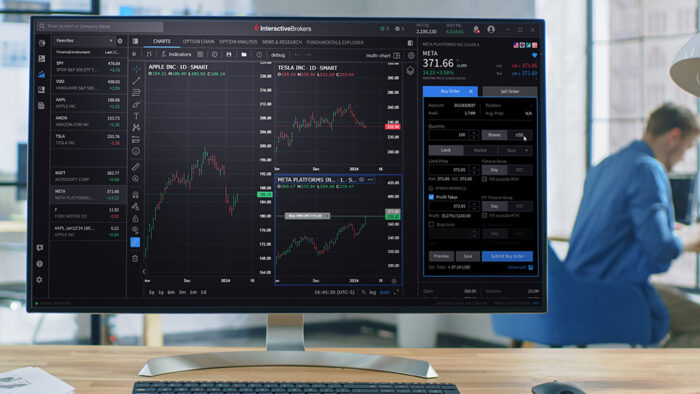Study Notes:
The most commonly understood definition of trading on margin is borrowing cash to buy securities.
The concept of margin also ties into leverage. Leverage is what gives the investor the ability to increase their buying power in the marketplace. By entering into a margin loan agreement with their broker, they gain the ability to invest a higher dollar amount than the cash balance in their account.
For example, imagine that the investor deposits $2,000 into a margin account and would like to buy XYZ stock. Without margin, they are limited to buying $2,000 of XYZ. But by utilizing margin they may buy $4,000 of XYZ (assuming a 50% margin requirement).
If XYZ stock rises 25%, the $4,000 invested becomes worth $5,000, for a profit of $1,000. But since you put up only $2,000 in cash, your actual investment return is 50% ($1,000 profit / $2,000 original investment).
Short sellers are betting on a decline in the stock price by selling something that they do not own and then buying it back at a lower price.
In order to sell short, the investor must borrow shares from their broker. This involves risk, because they are required to return the shares at some point in the future by buying them back. If the shares are trading at a higher price than they sold them at, they will have a loss. If they are trading at a lower price, they will have a gain.
As the short seller, you are borrowing shares from another investor or a brokerage firm and selling it in the market.
Short selling is governed by Regulation T of the Federal Reserve Board in order to manage the risk associated with selling something that you do not own.
It is possible for the investor to end up owing more money than they initially received in the short sale if the market price of the shorted security increases after you sold it. If that happens, they may not be financially able to buy back and return the shares to the broker from which they were borrowed. Therefore, margin requirements act as a form of collateral in requiring the short seller to put up equity beyond the value of the short sale transaction.
A margin account also allows the brokerage firm to liquidate your position. This is part of the agreement that is signed when the margin account is created and increases the likelihood that they will return the shares before losses become too large and you become unable to return the shares.
A short sale transaction is like a mirror image of a long trade where margin is concerned.
Under Regulation T, short sales require a deposit equal to 150% of the value of the position at the time the short sale is executed. This 150% includes the full value of the short (100%), plus an additional margin requirement of 50% or half the value of the position.
The margin requirement for a long position is also 50%.
If the investor shorts $20,000 of XYZ, they would be required to put up the $20,000 which comes from the short sale plus an additional $10,000, for a total of $30,000. $30,000 is their initial margin requirement. After the position is created, they will be transitioned to a maintenance margin requirement, which is lower. The maintenance margin requirement is the minimum equity requirement for their account and is meant to ensure that there is adequate equity to hold the XYZ short position, along with any other positions.
The investor’s maintenance level is based on the current market price of the security, and not on the initial price at which the security was sold short.
The maintenance margin requirement on short sales depends on the price and quality of the stock, since these determine the risk associated with the short position.
For example, blue chip stocks may have substantially lower maintenance margin requirements than speculative small-cap stocks.
Rehypothecation
Margin requirements on a short sale can also be fulfilled with eligible securities in the investor’s account. In a margin account, securities are automatically pledged as collateral to meet the margin requirements of the short sale, typically as an additional 50% of the value of the transaction.
These securities are pledged to the lender of the margin loan in their account. In this case, the lender would be your broker.
The broker then uses the securities as a pledge for the margin on their own margin account or as backing for a loan with a bank.
Again, it’s important to be aware of the risks. If the investor is unable to meet their loan obligations, their broker has the right to liquidate the investor’s assets to bring the account into margin compliance.
In this video, we reviewed the mechanics of margin trading for a short sale including:
- Review of margin definitions
- Reminder that short sales can only be executed in a margin account
- Margin requirements of a short sale
- Rehypothecation










